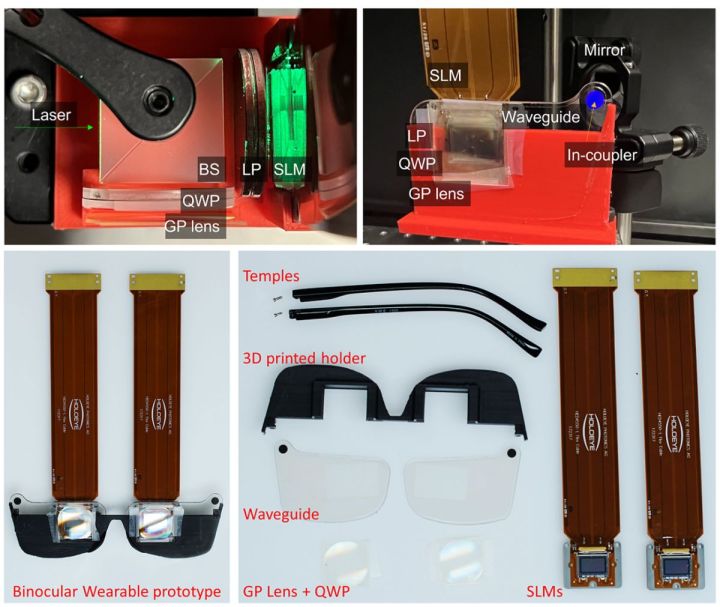Many technology companies are working on improving aspects of VR, including making it more vivid and realistic. Now, new research from Stanford University and Nvidia aims to make headsets easier to wear.
The device is a push to have VR glasses look more like everyday glasses rather than being the large, wrap-around VR headsets that are seen on the market today. The prototype is called “Holographic Glasses” and can provide “a full-color 3D holographic image using optics that are only 2.5 millimeters thick” and weights 60 grams. Researchers compared the prototype to the Meta Quest 2, which weighs 503 grams.

The design remains rudimentary at this point with film ribbons that extended from each lens. However, the teams said this design has many benefits beyond a smaller and thinner VR frame. The “pancake lenses” on the Holographic Glasses prototype in theory allow for an unlimited resolution and a field-of-view of up to 200 degrees.
The current prototype does face a number of limitations, including having a field of view of only 22.8 degrees. The Holographic Glasses also need to be able to very accurately measure and track a user’s pupil, which is contingent on a more developed design.
Overall, it would take a larger company to invest in this concept to bring it to life in a consumer fashion.
You can read more details about the project in the research paper, “Holographic Glasses for Virtual Reality” by Jonghyun Kim, Manu Gopakumar, Suyeon Choi, Yifan Peng, Ward Lopes, and Gordon Wetzstein.

Meanwhile, brands continue to develop technology for the standard VR and AR headsets. In June, Meta CEO Mark Zuckerberg showcased technologies for at least four VR headset prototypes the brand is currently working on that might translate into a consumer product later this year. These technologies focused on solving issues around resolution, focal depth, optical distortion, and HDR, with “focal depth” and “retinal resolution,” being similar to the goals Stanford and Nvidia aim to meet with their own prototype.
Focal depth aims to account for how eyes might shift away from focus objects in VR, while retinal resolution aims to meet 20/20 vision with the associated headset display. Such developments stand to improve on the current specs of Meta’s current headsets, such as the Quest 2. However, they are especially expected to benefit the brand’s long-rumored VR headset, currently known as “Project Cambria,” or the Meta Quest Pro.
Meanwhile, Apple is rumored to be developing its own mixed-reality headset, which is rumored to weigh just 150 grams.




